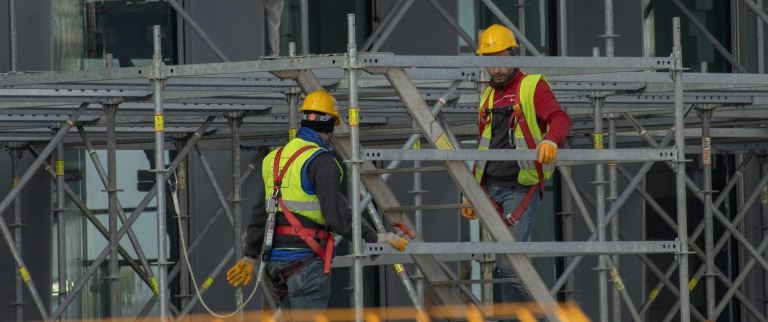July 18,2024
7 Secrets to Mastering Emergency Response Plans at Your Worksite!

Emergency Response Plans: How to Prepare Your Worksite
In the fast-paced and often hazardous environment of a construction site, being prepared for emergencies is crucial. An effective emergency response plan can significantly reduce the impact of unexpected incidents, ensuring the safety of workers and minimizing damage. In this blog, we will explore the key components of a robust emergency response plan and provide guidance on how to implement it on your construction site.
Key Components of a Robust Emergency Response Plan
1. Risk Assessment
○ Identify Potential Hazards: Begin by conducting a thorough risk assessment to identify potential hazards specific to your construction site. These may include fire, chemical spills, structural collapses, and severe weather events.
○ Evaluate Impact and Likelihood: Assess the potential impact and likelihood of each identified hazard to prioritize your emergency preparedness efforts.
2. Emergency Response Team
○ Formation of the Team: Designate a team of trained individuals responsible for managing emergencies. This team should include representatives from various departments such as site management, safety officers, and medical personnel.
○ Roles and Responsibilities: Clearly define the roles and responsibilities of each team member. Ensure that everyone knows their specific duties in an emergency situation.
3. Emergency Communication Plan
○ Internal Communication: Establish clear communication channels within the site. This includes using alarms, public address systems, and walkie-talkies to quickly disseminate information.
○ External Communication: Identify key external contacts, such as local emergency services, nearby hospitals, and regulatory authorities. Maintain an updated list of contact numbers and ensure that team members know how to reach them.
4. Evacuation Plan
○ Evacuation Routes: Design and clearly mark evacuation routes throughout the site. Ensure that these routes are unobstructed and easily accessible at all times.
○ Assembly Points: Designate safe assembly points where workers can gather after evacuating. These should be located at a safe distance from potential hazards.
5. Emergency Procedures
○ Specific Actions: Develop detailed procedures for various types of emergencies. For instance, outline specific steps for handling a fire, chemical spill, or severe weather event.
○ Drills and Simulations: Regularly conduct drills and simulations to practice these procedures. This helps workers become familiar with the actions they need to take and improves their response time during actual emergencies.
6. First Aid and Medical Response
○ First Aid Kits: Ensure that first aid kits are readily available and stocked with necessary supplies. Position these kits in easily accessible locations across the site.
○ Trained Personnel: Train selected workers in basic first aid and CPR. This ensures immediate medical attention can be provided before professional help arrives.
7. Training and Education
○ Regular Training: Conduct regular training sessions for all workers to familiarize them with the emergency response plan. Ensure that new employees receive this training as part of their orientation.
○ Emergency Preparedness Education: Educate workers on the importance of emergency preparedness and encourage them to stay vigilant and proactive about safety.
8. Post-Emergency Evaluation
○ Debriefing Sessions: After an emergency or drill, hold debriefing sessions to evaluate the effectiveness of the response. Gather feedback from workers and emergency response team members.
○ Continuous Improvement: Use the insights gained from debriefing sessions to update and improve the emergency response plan. Address any identified weaknesses or areas for improvement.
Implementing the Emergency Response Plan on Your Construction Site
1. Develop the Plan: Begin by developing a comprehensive emergency response plan that includes all the key components outlined above. Ensure that it is tailored to the specific risks and needs of your construction site.
2. Communicate the Plan: Clearly communicate the plan to all workers. Use visual aids such as maps, posters, and handouts to reinforce key information about evacuation routes, assembly points, and emergency procedures.
3. Regular Training and Drills: Schedule regular training sessions and drills to keep workers well-versed in emergency procedures. Make these drills as realistic as possible to ensure workers are adequately prepared.
4. Review and Update: Periodically review and update the emergency response plan to reflect any changes in site conditions, new hazards, or feedback from previous drills and actual emergencies.
5. Foster a Safety Culture: Encourage a culture of safety where workers feel empowered to report potential hazards and take proactive measures to ensure their own safety and the safety of their colleagues.
By implementing a robust emergency response plan, you can significantly enhance the safety and preparedness of your construction site. Remember, the key to effective emergency management is preparation, communication, and continuous improvement. Prioritizing these elements will help protect your most valuable assets – your workers.
For more information on safety protocols and emergency response planning, visit our website at www.mtandt.com.